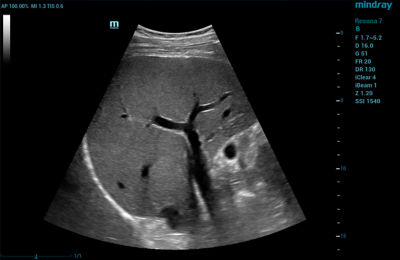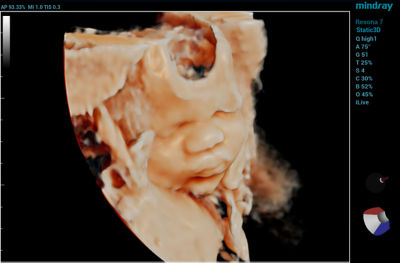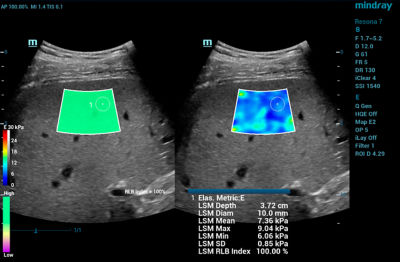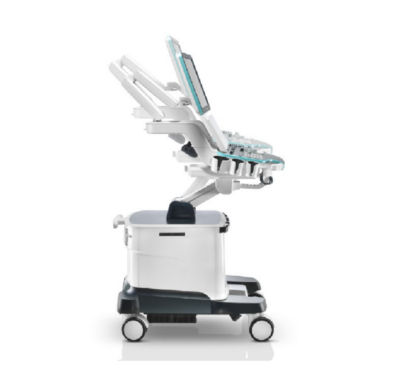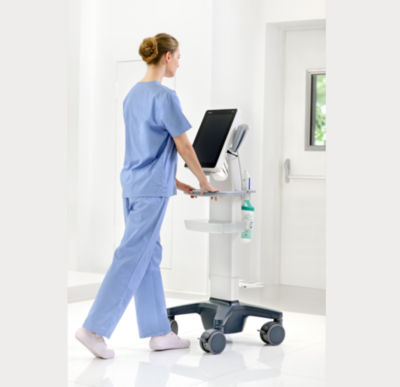As the healthcare industry faces pressure to improve patient outcomes and reduce costs, clinicians are turning to ultrasound for a more cost-effective, real-time, and patient-friendly imaging alternative.
When looking to purchase a new system – whether it be to replace an outdated ultrasound machine or purchase your first system – many factors should be considered. You’ll want to choose the best system for your practice, staff, exam types, and budget. Considering the average life span of an ultrasound machine is around seven years, we understand that this is a big decision and one that will directly impact you and your team’s day-to-day workflow for years to come.
Mindray offers a comprehensive suite of innovative, leading-edge, accessible ultrasound machines across many specialties and departments ranging from Emergency Medicine to Radiology to Physician Offices and more. The list below encompasses the top considerations across a wide range of ultrasound applications and uses. The top needs will differ broadly between departments and specialties; however, from our experience and clinician feedback, these are some of the top considerations.
When looking to purchase an ultrasound machine, here are the top considerations to keep in mind to help you make an informed decision:
Image Quality
Image quality and image-enhancing feature sets are typically top of mind when looking for a new ultrasound machine. The quality of the image directly impacts patient care, so it is important that you select a system that provides the quality you need to arrive at the appropriate diagnoses.
Learn More About Mindray's Award-Winning Imaging Technologies
References:
Workflow
Most ultrasound systems come equipped with some level of exam automation. Exam automation software can help ensure that every exam is fully complete by walking the user through the images and measurements they need to acquire. This helps to standardize exams regardless of the clinician and can help reduce repeat exams and additional testing.
In evaluating these workflows, you’ll want to determine what exam types are available for automation, as this may vary between systems. You will also want to walk through the available protocols and see if they can be adjusted or customized to adhere to your practice standards or to capture the specific workflows that each department/physician requires.
Ease of Use
Ease of use for physicians is essential when looking to purchase an ultrasound machine. Typically, in the Point of Care (POC) environment, being able to quickly arrive at a decision is of the utmost importance. POC environments include Emergency Departments, Urgent Care, Critical Care, and more. Being able to rapidly triage, diagnose, and treat is essential in POC environments due to the heightened severity associated with these patients.
For Radiology environments, sonographers typically value how easy it is to get a ploppable image – meaning they can place a transducer on a patient and easily capture the images they need for the exam.
Ergonomics
Ergonomics tend to be a big consideration for sonographers who typically scan patients all day long. Today, 80–95% of sonographers experience work‐related pain, 90% experience this pain for more than half their career, and one in five sonographers sustain a career-ending work‐related injury1. When looking for an ergonomic system, consider the following:
- How easy is it to position the monitor?
- Does the system have a fully articulating monitor so the screen can be adjusted to an optimal viewing angle in any environment?
- Is the system fully adjustable for seated or standing use?
- How many active transducer ports are available?
- Is programmable-button transducer technology available?
- What cable management options are there to prevent dragging, cable fatigue, tripping hazards, and reduce contamination?
Disinfection
Ease of disinfection is critical to keep your staff and patients healthy and your ultrasound systems running at peak performance. Some systems require a specialized disinfection process or can only be disinfected with certain products. You will want to inquire about this and determine if you can easily source the disinfectant required. You may also want to request to see the disinfection process during a demo to see how time-consuming or cumbersome it may be. Some systems, particularly Point of Care Ultrasound Systems (POCUS) have unique designs to reduce the time it takes to properly disinfect a system.
Technology Updates
Technology is constantly changing in order to adapt to an evolving environment. Studies of historic data from legacy software systems have identified three specific causes of this change: namely software maintenance, architectural evolution, and software re-engineering. That means that without regular software enhancements, an ultrasound machine may become technologically obsolete. Ultrasound updates, software fixes, and enhancements may cost an average of $10,000 per system annually, making an affordable system or set of systems unmanageable in the long run. When selecting an ultrasound that will fit your needs, you need to ensure that the system has the technology you need today and a solution to help you get the technology and upgrades you may need tomorrow.
Advanced Capabilities
When examining the available options on an ultrasound machine, you want to look for the features and tools you will utilize most. Many companies offer specific systems and packages for specialties – such as Point of Care, Critical Care, Private Practice, Women’s Health, General Imaging, etc. When looking at the available features, be sure to see if the system can have features or technologies added onto the system later, as your needs and exam types may change. Some features to look for include a wide breadth of transducers, Contrast Enhanced Ultrasound (CEUS), Shearwave Elastography, 3D/4D imaging, AI tools, workflow enhancing tools, and productivity tools.

